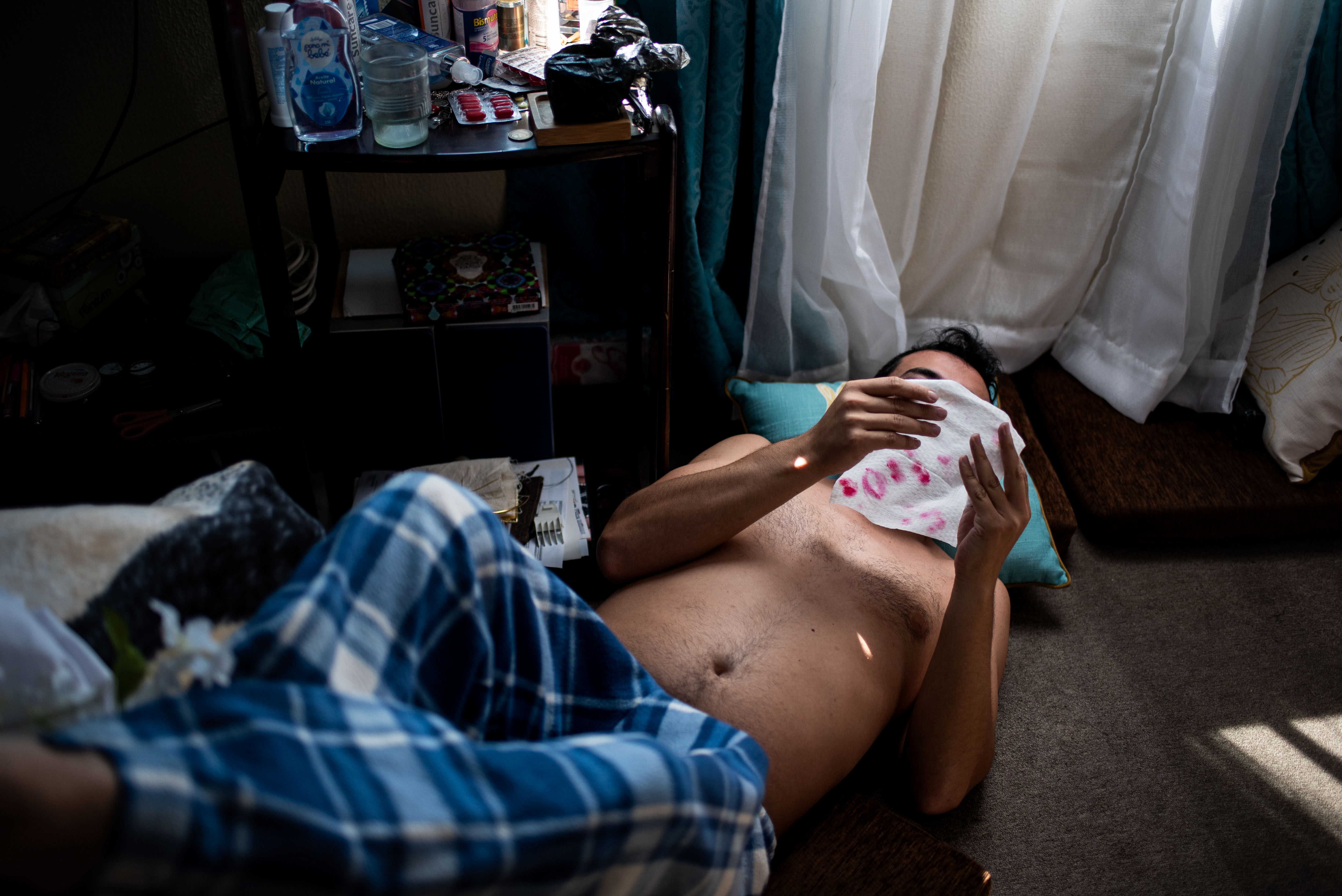Deep purple, blue and red lights color the cobblestone floors and classic brick arcs of an amphitheater where a small crowd has gathered to see their friends, sons and daughters perform. Hard metal plays in the backdrop to welcome us into what feels like a queen’s castle or a witch’s dungeon. What’s abundantly clear is that tonight, we have all come as humble guests.
The music fades, turns into Muslim prayer, then switches to Mercedes Sosa’s Solo Le Pido a Dios. A large black flag with a golden triangle flaps and waves through the air as the names of transgender people killed across Ecuador over the past few years are spelled out to the protest lyrics of Sosa’s commanding voice.
“Viviana, Donatella, Jose, David, Andrea…” the list goes on for a full three minutes. “Thank you for your legacy, for giving us the possibility to live,” says a voice from the shadows as celtic folk music plays and white lights brighten the room.
A person with long black hair, a full beard and a sparkling red sari that exposes naked shoulders steps forward and places a bouquet of white roses below the flag. Her bold red lips open wide and long to Sarah Brightman’s version of Scarborough Fair, their arms move dramatically to a Celtic harp, then one drag performer after another catwalks into the room. Each one bends down to their sparkling stiletto heels, lifts their dress and places a white rose at the feet of the black flag.
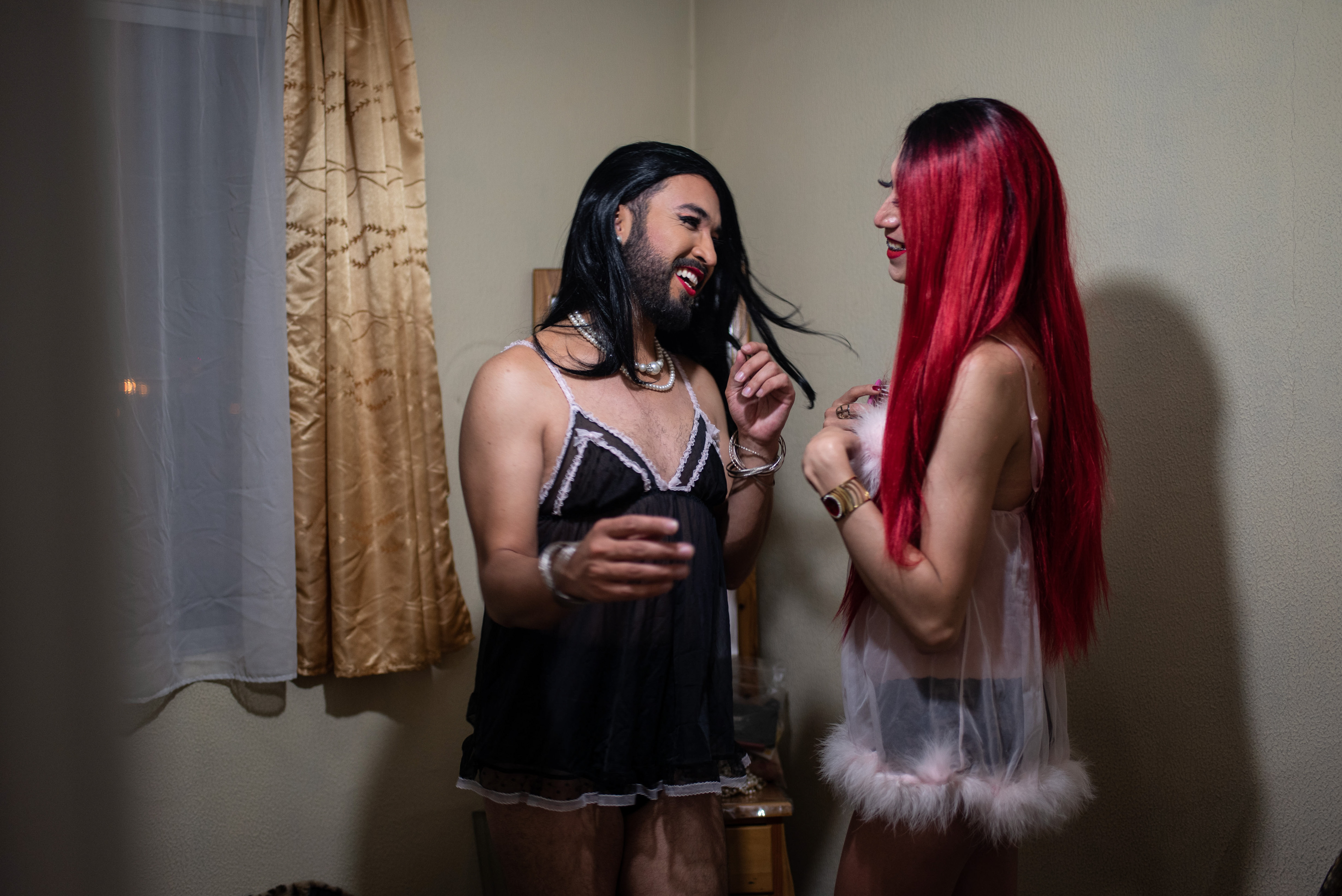
This ritual is part of a rite of passage for a dozen or so new drag artists who are joining La Hermandad Hektra—a sorority of five different houses and families united around the art of drag in Quito, Ecuador’s capital city.
After paying their respects to the dead, each newcomer drinks from a cup of medicinal herbs, reads out an oath of allegiance to La Hermandad and receives a ring on their finger as a sign of loyalty.
“I want them to feel part of something larger, something very powerful,” says Gledys Macías who incarnates Destiny La Oráculo, the ceremony officiant. “I want them to know that yes, there is a lot of work that goes into all this, that transitioning isn’t easy, but there are also very good people standing behind them who are always ready to help.”
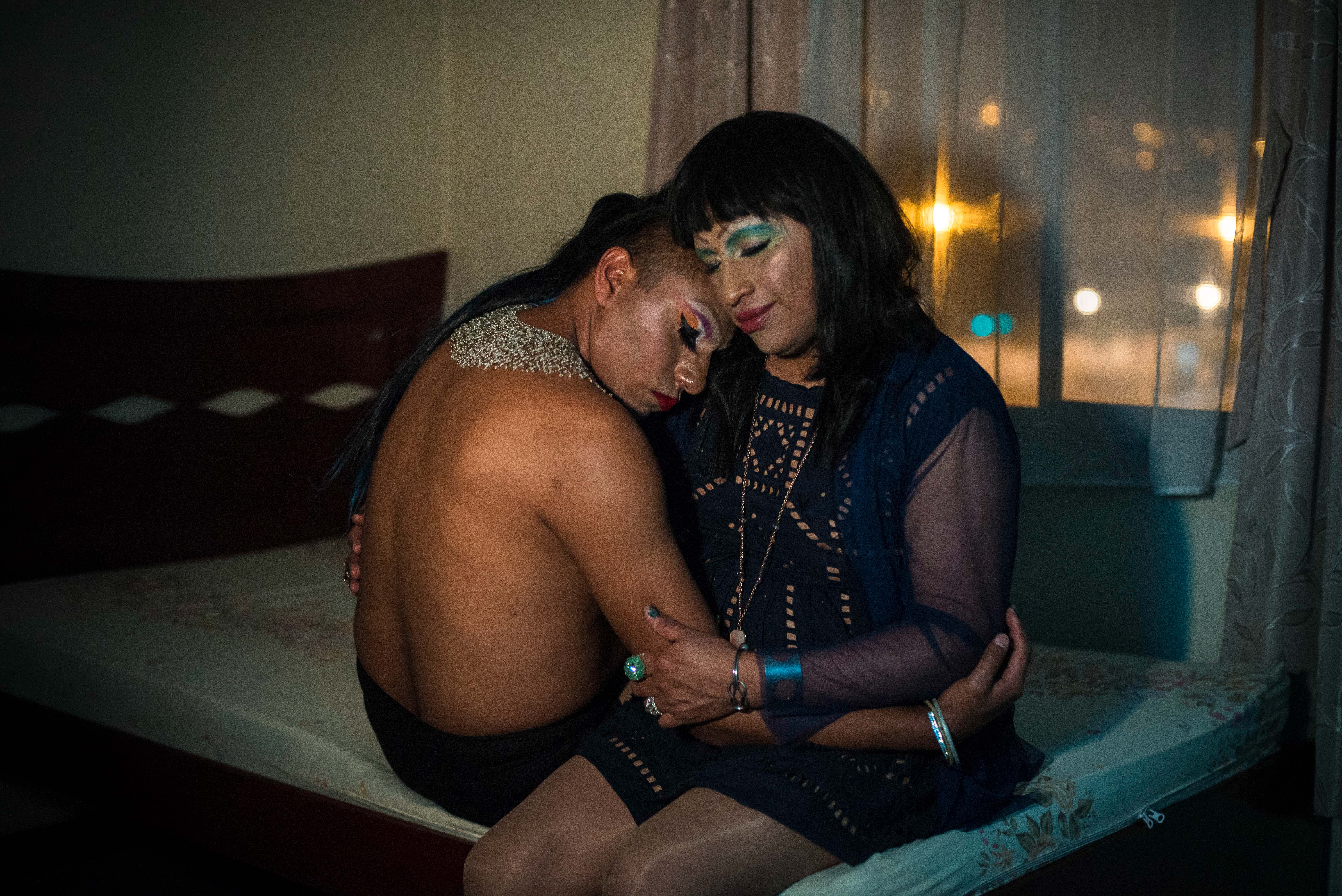
In the past three years, Macías has used rituals and ceremonies to help young queer Ecuadorians know their personal transformation is sacred and honorable. Belonging to a community is vital, particularly when it comes to facing a society that shames and represses gender non-conformity.
The way many of Quito’s drag artists find this sense of belonging in the trans community speaks a lot about how they see their own identity. Destiny La Oráculo, for instance, isn’t a mere costume, or a character they perform on stage, Macías tells me, but a mosaic of previously fractured and dormant identities that have come alive and together through a personal process of transformation, or transformismo.
The locally-coined term “transformismo” is an umbrella word Macías hopes people will use more widely to describe all the ways the art of drag shakes up, destroys, and remakes their sense of self. Not as an ephemeral experiment, but as a way to get to a more profound and authentic way of being. While this certainly includes gender expression and identity, it also transcends it.
Understanding Transformismo
Gledys’ hair is short and messy as they walk around the house in dark blue sweatpants, a simple white T-shirt and brown sandals. We’re at their apartment for a pajama party with some of the other members of La Hermandad; while some are busy cooking a seco de chivo, others are applying make-up, taking selfies and scrolling on their phones.
In comparison to the glamorous and eccentric Destiny La Oráculo who led the ceremony, Macías comes across as calm and bland. They seem like very distinct people on the surface, but a walk around their apartment reveals their home is one of many selves.
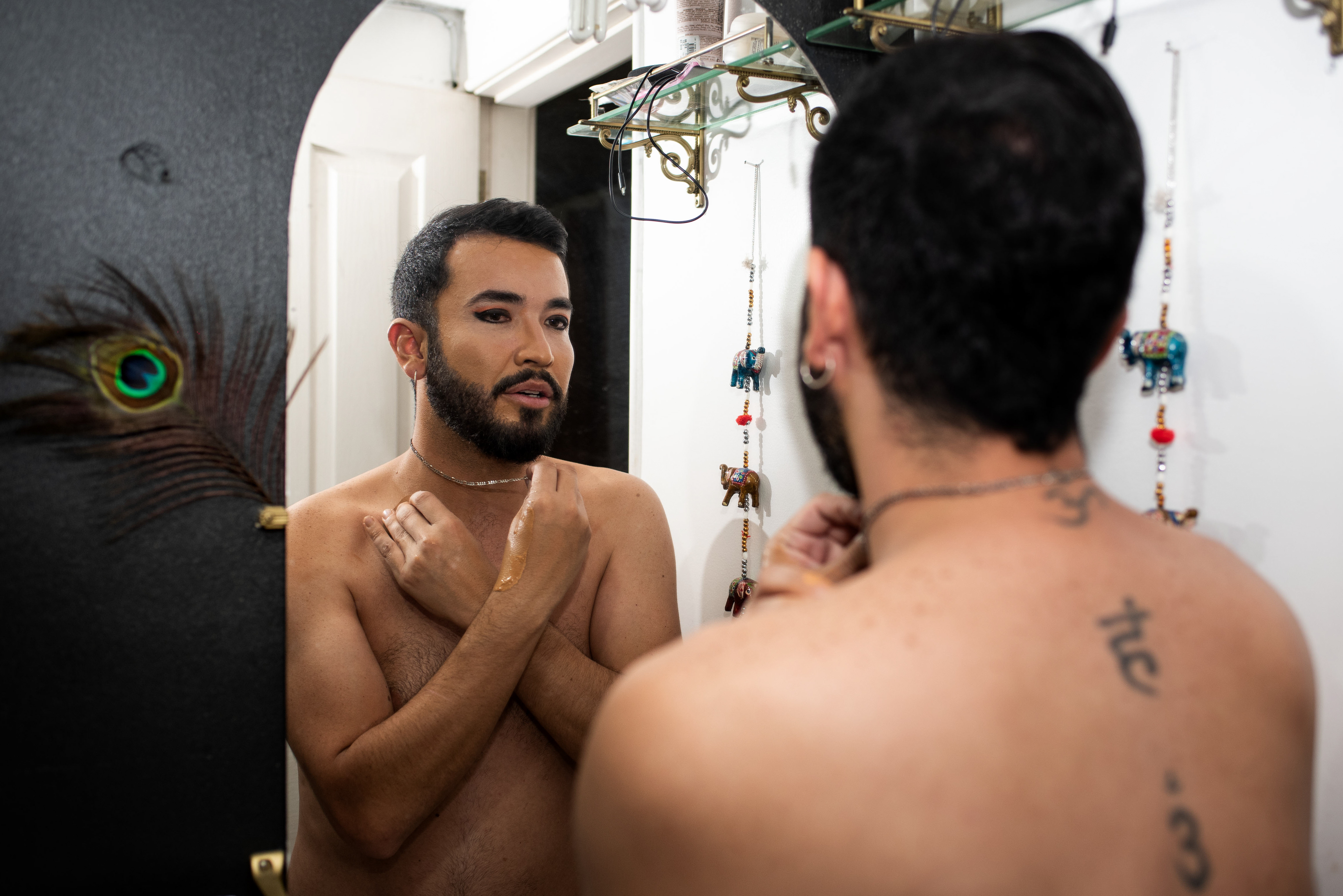
There is La Oraculo, Macías’ spiritual side, their sensual femme Destiny, and then somewhere in between there is Gledys, astutely navigating the balance of living as they desire, and as demanded by society.
“I am honestly such a hippy,” Macías chuckles as we walk past a large painting of a meditating Buddhist monk immolating in flames, which hangs next to a glass cabinet with four different sets of tarot cards, white candles, and several packs of incense. Buddhist scrolls, dreamcatchers and portraits of Virgin Mary can be seen on almost every wall across the apartment.
“That’s why I needed to give birth to La Oráculo,” they say, standing next to two hauntingly large autoportraits, “It felt like coming out of a spiritual closet.” Macías has always been spiritual, they say, but when they incarnate La Oráculo, it’s different; they feel they can truly channel and become a mediator for spirit energy. As Macías describes, la Oraculo has “the power to perform rituals and channel the energy of ancestors and the Moon, connecting past with present and future.”
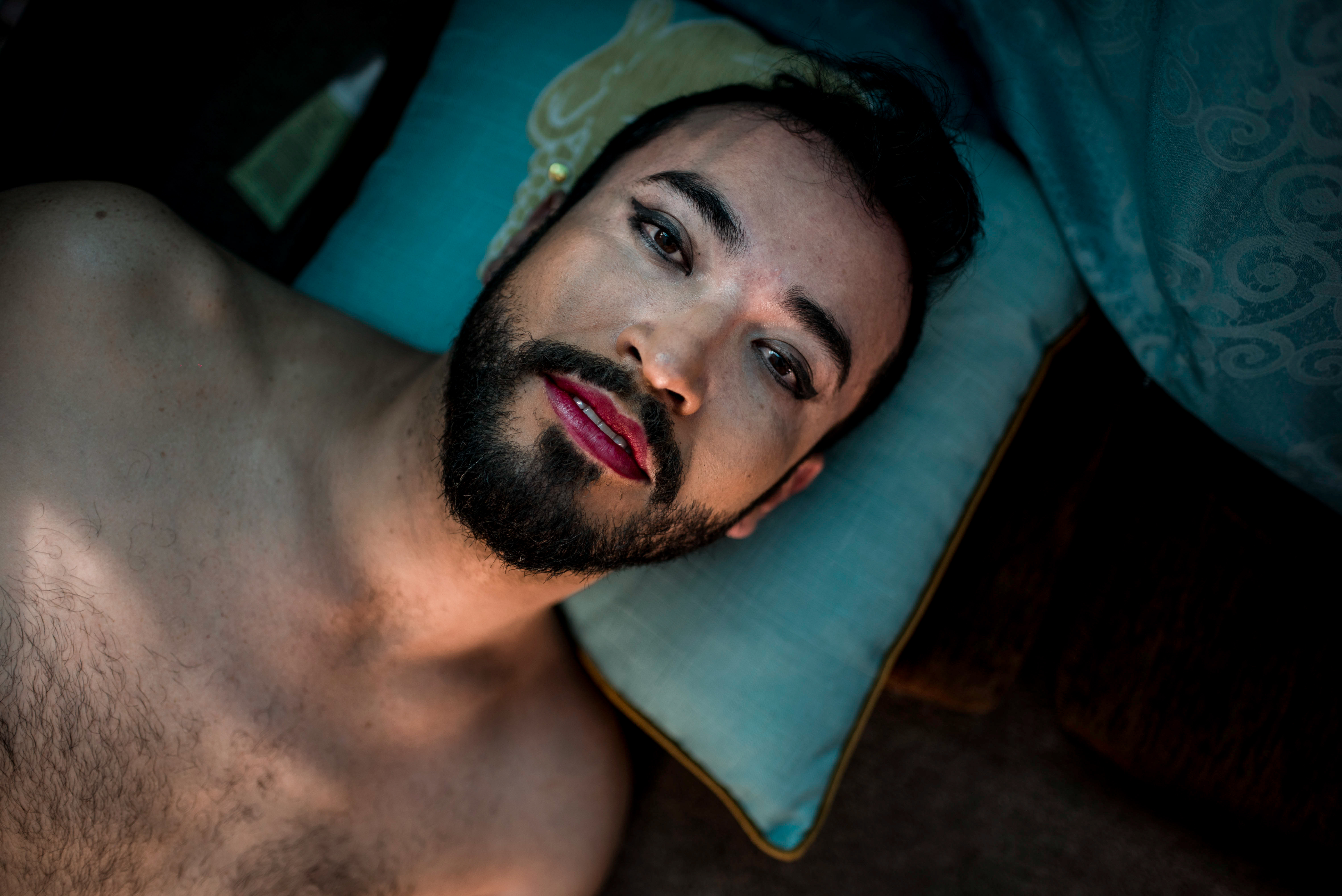
Even as Macías’ home is much more of a spiritual-hippie crib, they reserved one entire room as a walk-in closet for make-up kits, dresses, stiletto heels, long leather boots, necklaces, wigs and mirrors. An hour or two later, when the seco de chivo has been served and everyone has eaten, Macías comes out of this room wearing a short black nightgown, their eyes popping from the dark eyeliner to match their long black hair and full beard.
“Destiny is my transvestite side,” they say with a tinge of secrecy. “I discovered her twelve years ago when I was exploring my femininity and cross-dressing with a friend.” Macías doesn’t share much more about Destiny, except that when money was hard to get by, sex-work helped them survive. Destiny has gone through many phases, they say scrolling past dozens of photos on their Instagram—from clean-shaven and discreetly cis-passing, to having a full-beard and extravagant make-up. But what remains constant is that “she’s slutty, always showing her thighs and ass,” Macías says with a laugh, filling the room with their always-spontaneous sense of humor.
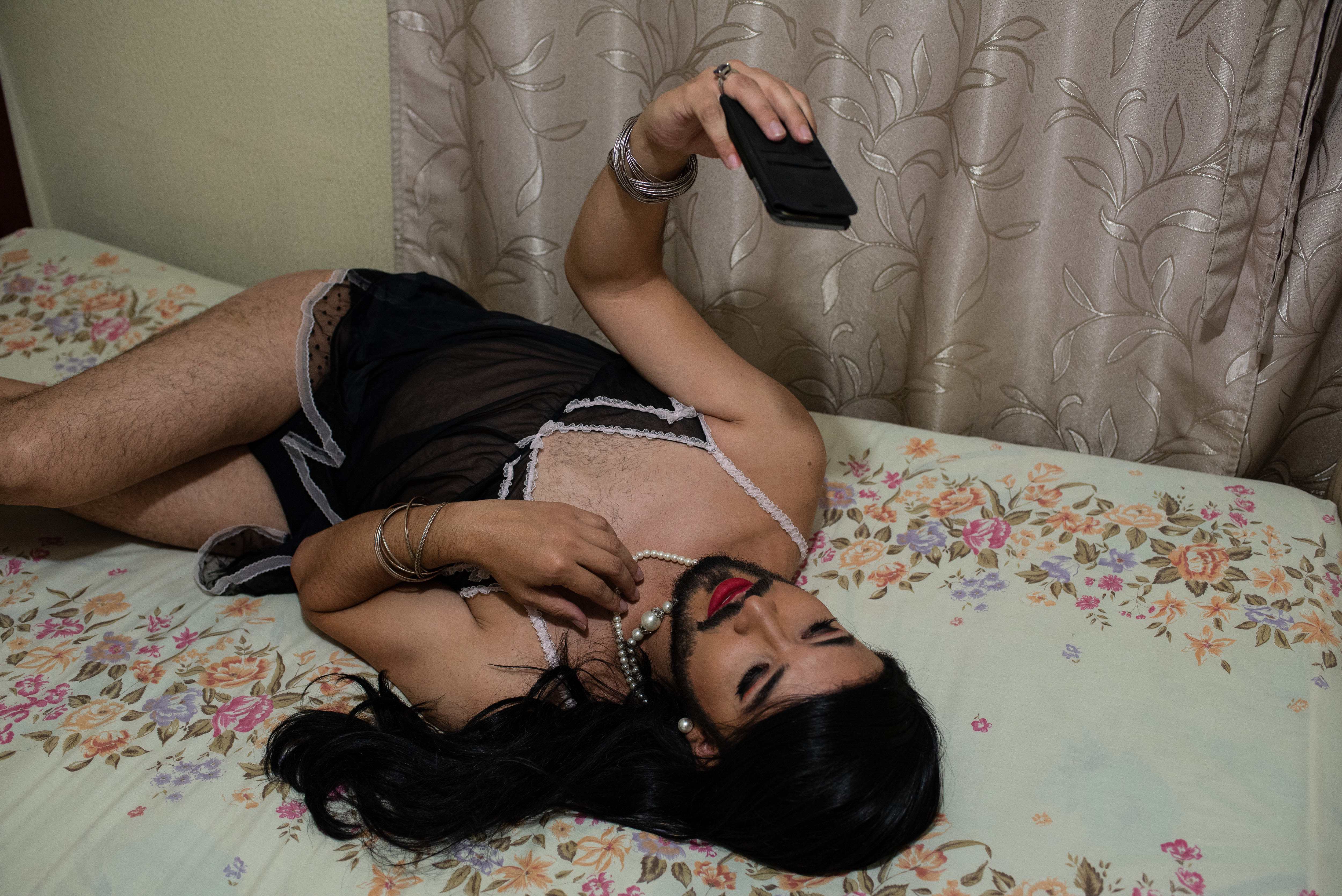
“They used to be fragmented parts of me,” says Macías, “but I have reached a point where they have all come together and they feel more unified, like layers wrapped on top of one another.”
While La Oraculo seems to have a clearer place in Macías’ life, they admit that Destiny continues to confuse them. “I don’t really know what gender I identify as anymore,” says Macías, “I just know I am not a man.” When I ask if they thought of transitioning, they release a deep sigh.
“I don’t have the same emotional strength and resilience as trans women do,” they tell me lounging into a chair as they recount the insults, glaring stares, and harassment they have received when walking down the street as Destiny. “I admire them, but I couldn’t go out wearing dresses every day. Besides, I have bills to pay. What do you think happens if I show up to work like this?”
These fears aren’t unfounded. It’s been merely 23 years since the decriminalization of homosexuality in Ecuador; an arduous fight mostly led by a collective of transgender women known as Las Coccinelle. While the LGBTQIA+ movement has landed more victories since—including last year’s legalization of same-sex marriage—the acceptance of transgender people in Ecuador still has a long way to go.
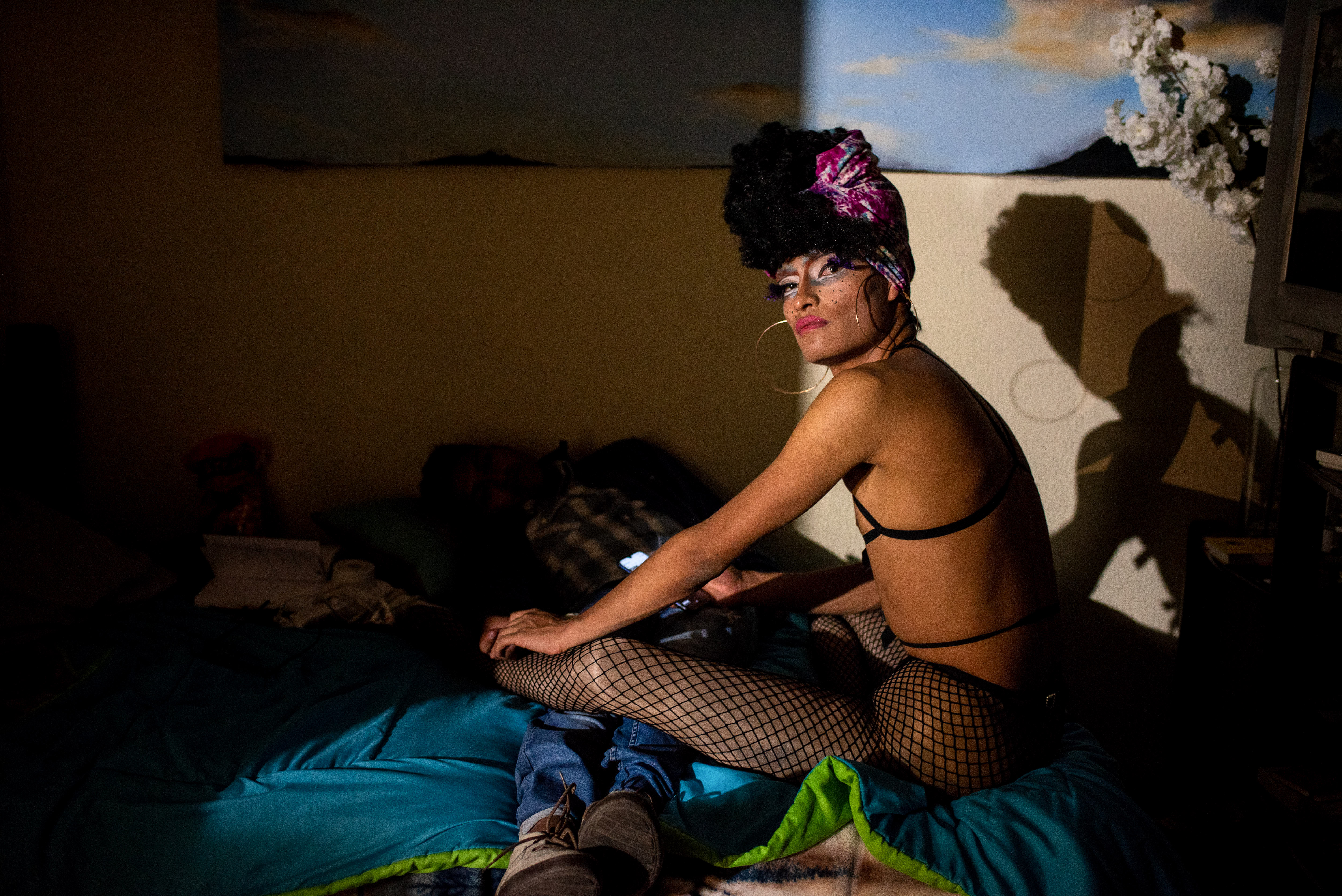
A 2017 study from the National Council for Gender Equality found that the vast majority of transgender and gender non-conforming youth in Ecuador face tremendous violence by family members at home. Including, but not limited to, physical and emotional abuse, forced ‘cure’ treatments from psychotherapists or religious clerics, and homelessness.
This violence seeps into the public realm, the study found. Over 92% of transgender people reported having suffered some kind of discrimination, exclusion, or harassment in public spaces. It’s what makes the need to ‘pass’ as a cisgender man or woman not only more desirable but also a matter of survival. In 2019 alone, there were 11 reported killings of transgender women in the country; that being said, visibly living somewhere in between is simply not an option without becoming a target for violence.
“Our strategy isn’t one of confrontation: the idea of ‘we are like this and society is gonna have to take it.’ We haven’t really overcome this fear of death, and maybe that makes us cowards, but it has kept us alive,” says Macías. “So instead we generate networks, cultivate friendships, use a lot of humor, and rely on support strategies like making sure we always arrive together at a party and also leave together.”
La Hermandad Delta: “We teach ourselves”
One of the chosen families in which people can feel free and safe to explore and express their inner being here is La Hermandad Delta—the sorority Macías co-founded 12 years ago when “we had no idea about how to apply make-up, how you’re supposed to do drag or had anyone to teach us.” But, Macías assures, “we didn’t have, nor need, RuPaul. We have taught, and will continue to teach, each other.”
Pamela Rentería, a 25-year-old theatre student in her last semester at La Universidad Central, joined the Deltas last year after becoming friends with Macías and others in La Hermandad. She didn’t think she would ever do drag but, amazed at the power of their transformation, she became intrigued. The more she hung out with them, the more she learned about drag, gender and sexuality. That’s when Rentería decided to attend La Escuela Transformista—a 4-day workshop school Macías organizes to teach the ins and outs of drag characters, performance as well as transgender history.
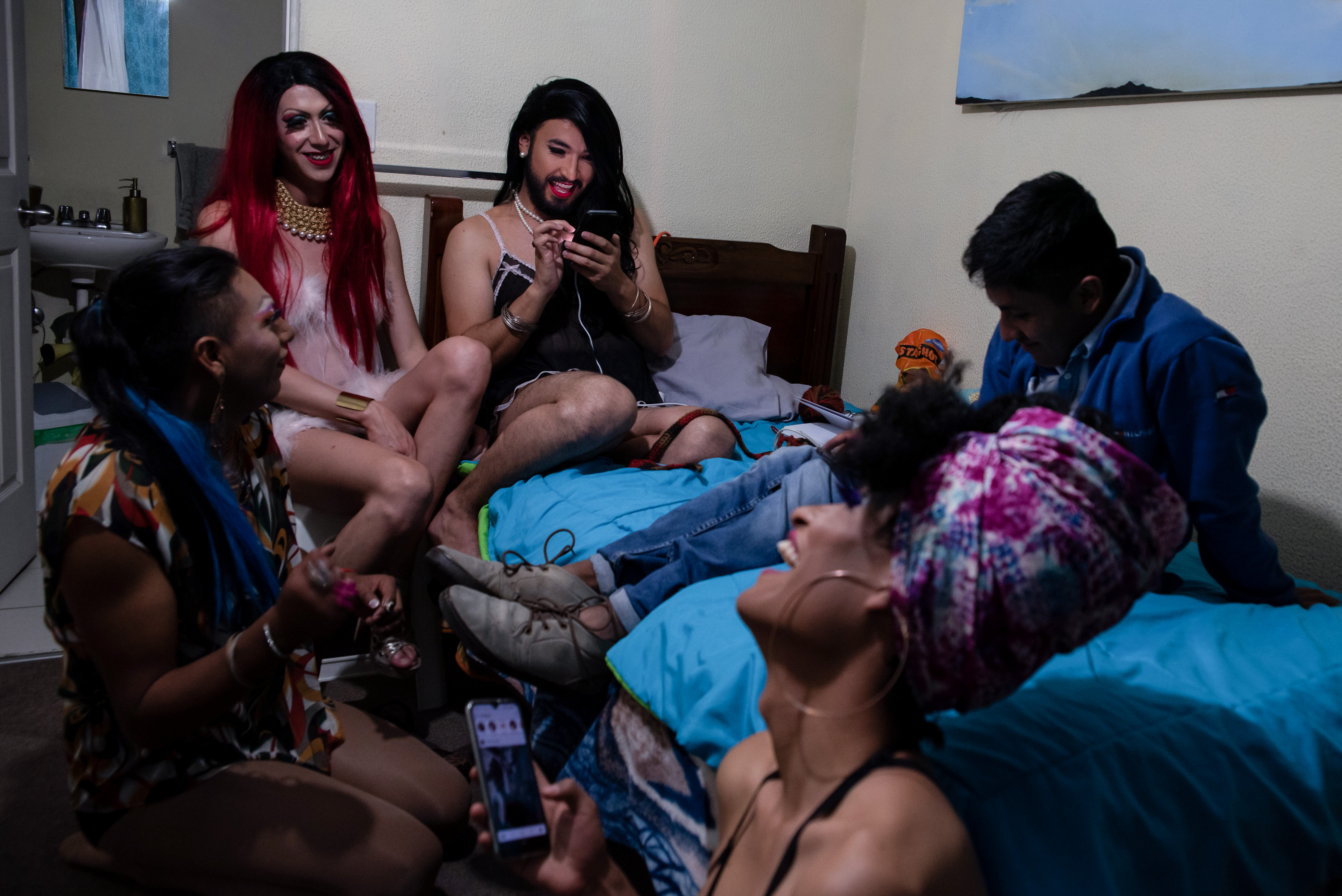
“Gledys taught me that transformismo isn’t playing a character distant from who you are, but that it’s a character that defines you, that’s a part of you, which comes out,” says Rentería, “this is how I discovered Dareyeska.”
While Rentería herself is bubbly and can oftentimes hide her awkwardness behind bursts of theatrical impersonations, Dareyeska comes across as smooth and calmly confident, owning the room wherever he goes. Most often he wears a dark suit, his chest is wide and open–unafraid–while his black facial hair contrasts with bright and colorful eyeshadow.
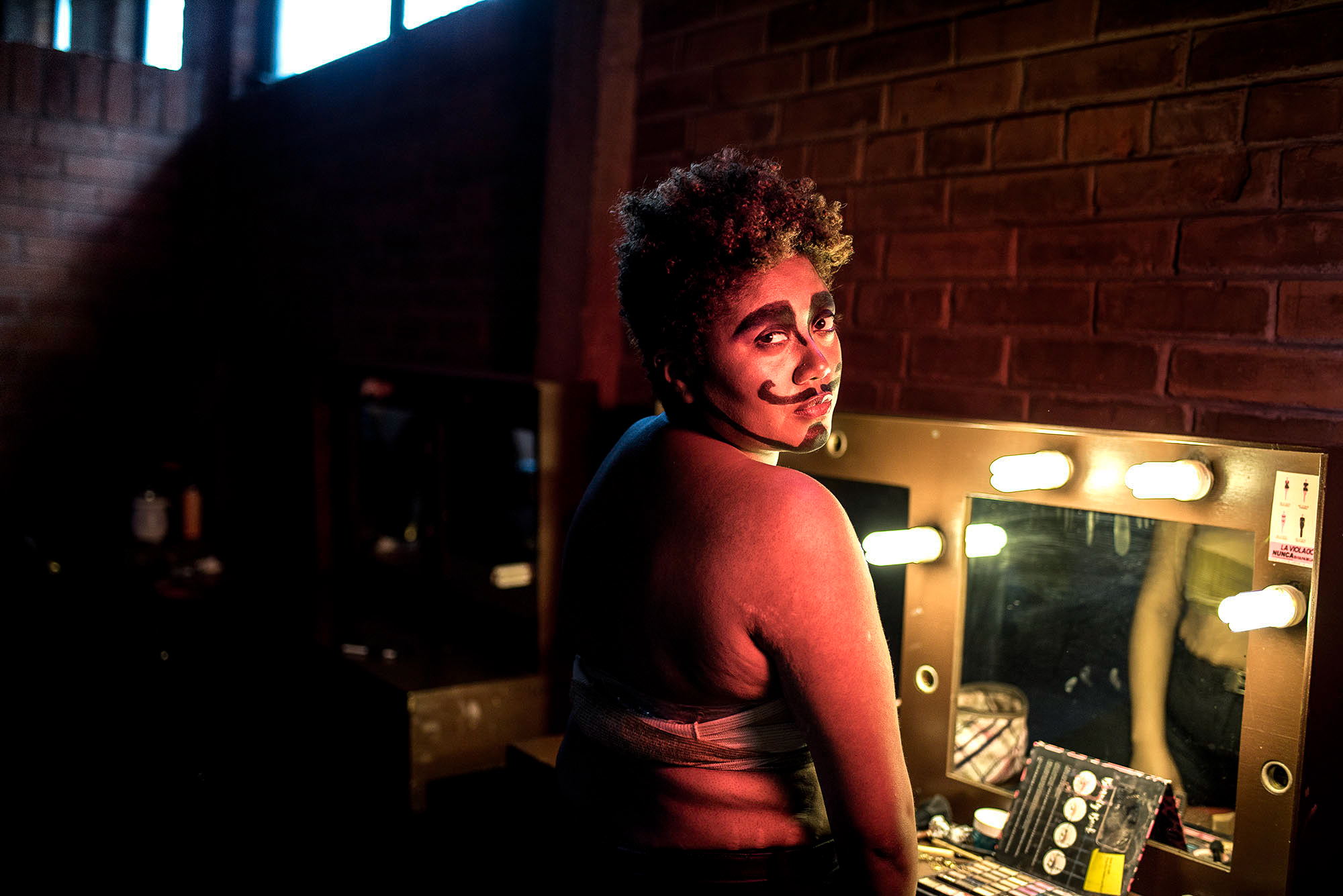
“I found that there are these two worlds inside of me that live side by side: the feminine and the masculine,” Rentería says. “In drag I feel I can finally give place to these two energies because Dareyeska isn’t stereotypically or exclusively masculine, I don’t like this macho toughness. He’s sensual, elegant, seductive.”
As the only drag king in the hermandad—and in Ecuador, to her knowledge—Rentería stands apart from the rest. The hermandad siblings can’t always help Rentería with applying facial hair and improving her impersonation of masculinity, she says, “but they do always cheer me on, help me with eye-shadow, tell me how great I look, or how awesome my performance was. And that’s more than enough for me.”
What binds Rentería to the rest of the family is the fact that, in the process of transformismo, one doesn’t always clearly know who one is anymore.
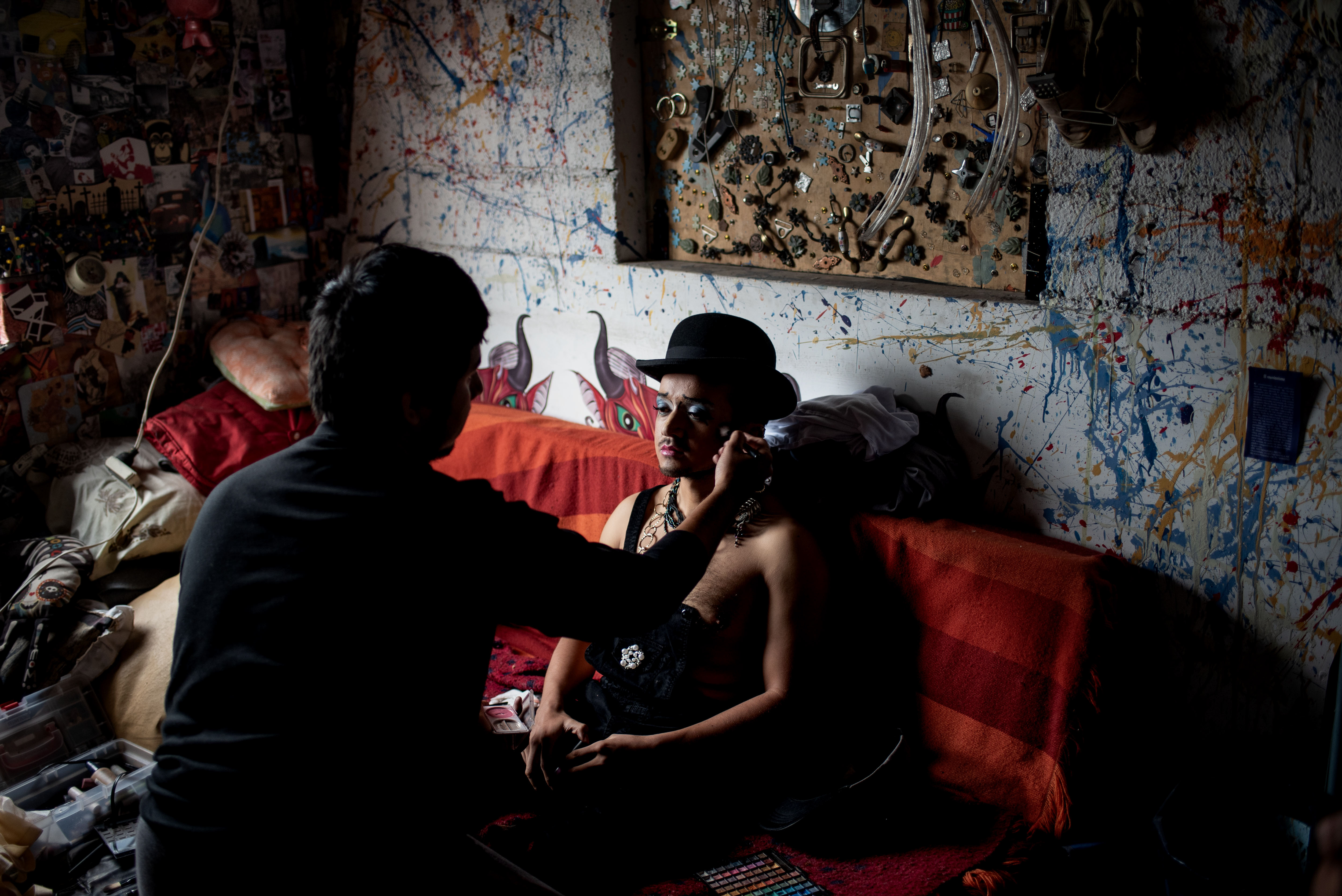
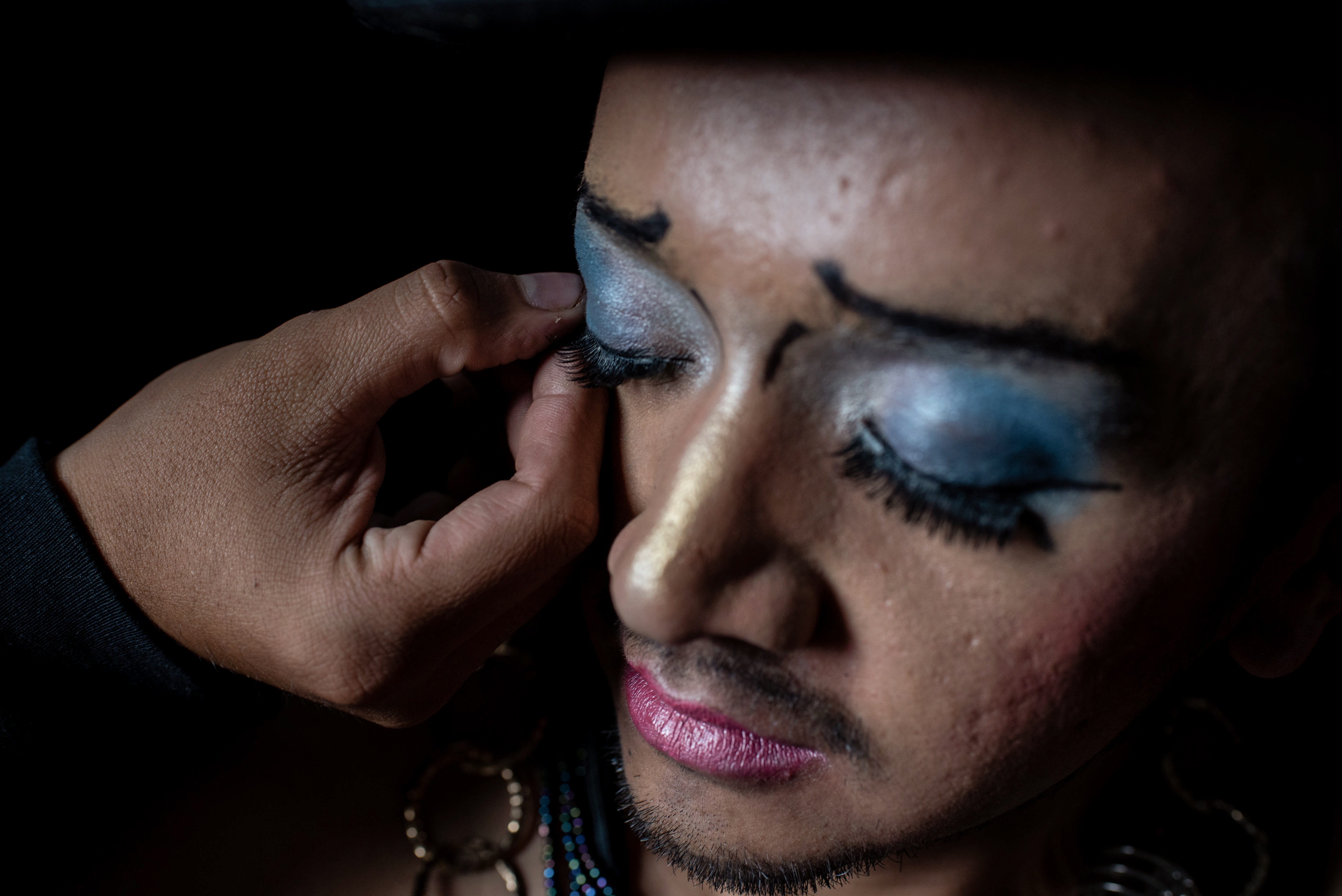
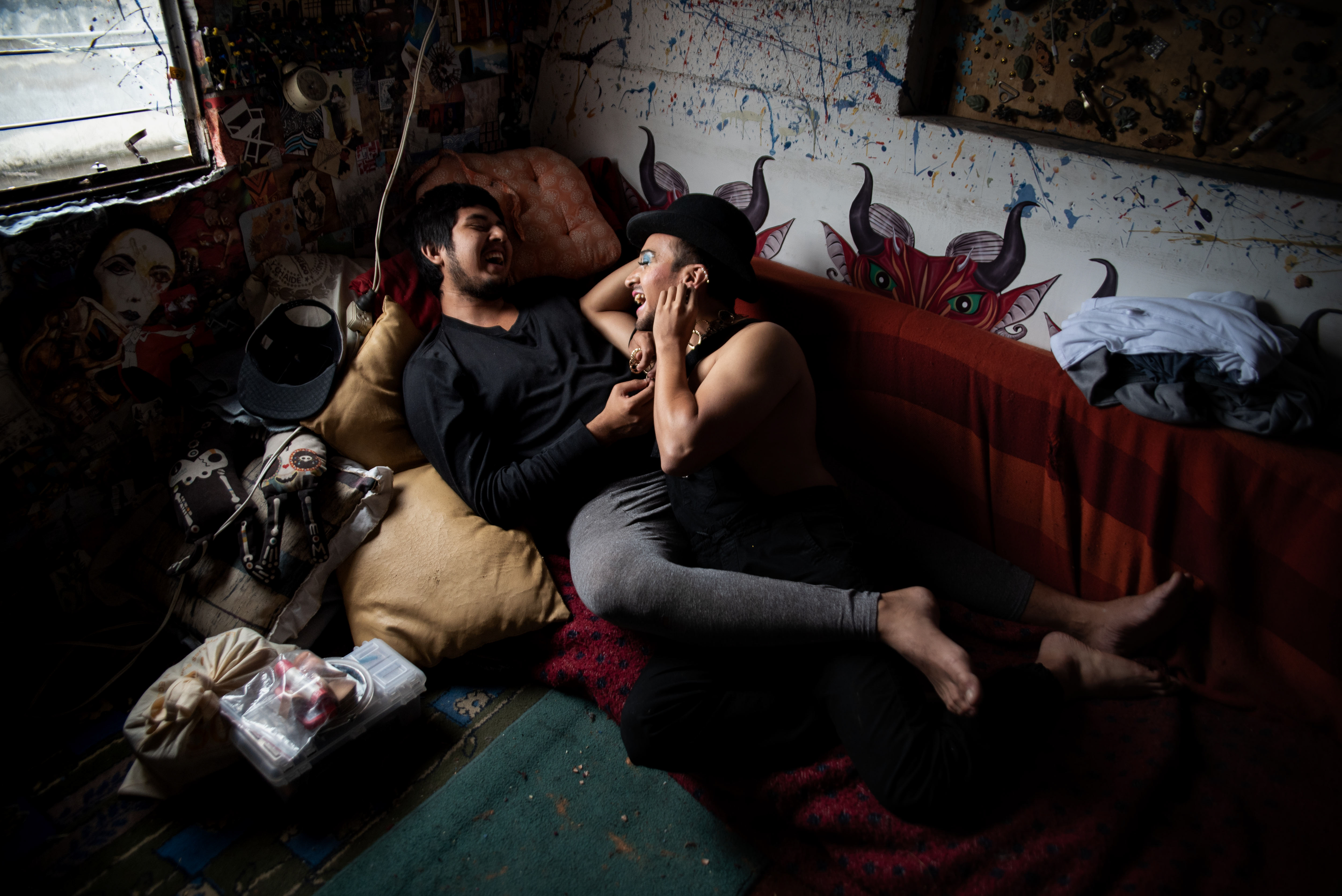
“I love Dareyeska, he’s so empowered and strong and handsome. Sometimes I wish I could just always be him because he’s so fearless, you know?” says Rentería with her eyes wide and glowing. “And there are moments where I get so lost in this character that I don’t know anymore if I am Pame, or Dares, or Darespame.”
This metamorphosis, from one character to another and back is what’s so striking about transformismo. It isn’t just that Rentería changes into Dareyeska, or Macías into Destiny, but that they also have to transform the other way around. One complies with the arrangements, rules and expectations of society. The other creates a parallel world of fantasy and possibility where they can decide and rule on their own terms. These split realities aren’t necessarily at odds with each other, but rather emerge as adaptations and strategies for queer life to flourish on difficult terrain. Keeping these two worlds neatly separate, however, isn’t always easy as Rentería and Macías can attest to. But “easy” would be missing the aim of transformismo which, after all, is breaking free from all the ways being human is confined and constricted.
“Human beings are truly crazy,” says Rentería laughing, “but I find that only through impersonating different characters can you get closer to that craziness because it destroys and reconstructs you. You discover that you can be anything you want.”
